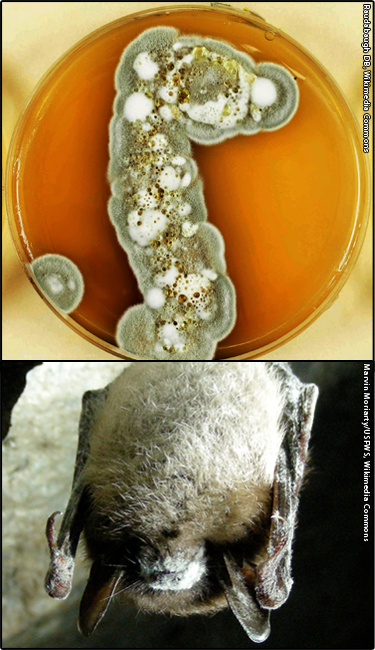Whitenose syndrome (Pseudogymnoascus destructans)
 Description: Believed to have been introduced from Europe or Asia but native range is still unknown. No know route of introduction. First photographed during the winter of 2005-2006 near Albany, New York.
Description: Believed to have been introduced from Europe or Asia but native range is still unknown. No know route of introduction. First photographed during the winter of 2005-2006 near Albany, New York.Identification: Cold loving fungus that causes white-nose syndrome in bats, which is fatal. It produces brown or grey colonies and secretes a brownish pigment.
Habitat: Native to Europe or Asia.
Reproduction: Grows very slowly on artificial media and cannot grow at temperatures above 20 degrees Celsius. Reproduces asexually by a curved conidia.
Impact and Damage: Impacts hibernating bats when body temperature decrease. Bats develop visible fungal growth on nose or wings and may awaken more frequently. They may also experience weight loss, dehydration, electrolyte imbalances and death. Spread primarily by the natural movement of infected bats.
Credits: The information provided in this factsheet was gathered from CABI: Invasive Species Compendium and Wikipedia.
Individual species images that appear with a number in a black box are courtesy of the Bugwood.org network (http://www.invasive.org).Individual photo author credits may not be included due to the small display size of the images and subsequent difficulty of reading the provided text. All other images appear courtesy of Google (http://images.google.com).
Common Name: | Whitenose syndrome |
Scientific Name: | Pseudogymnoascus destructans |
Family: | Pseudeurotiaceae (Ascomycota fungi) |
Habit: | Pathogens |
